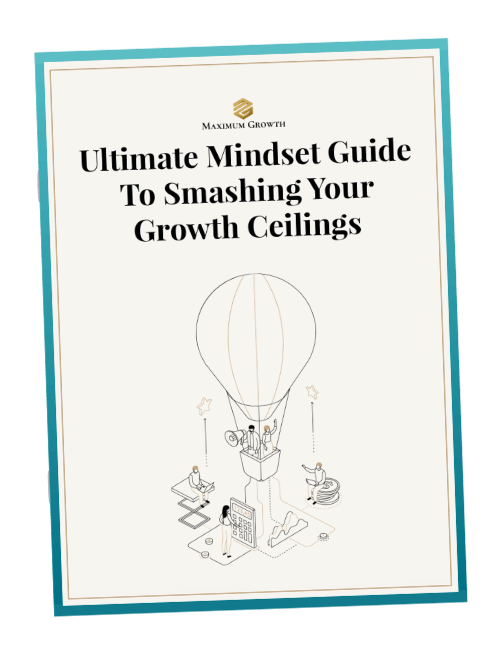Her face was drenched,
Tears streaming down her little face,
“They kept calling me rude; they kept calling me rude.”
She couldn’t understand why two of her friends kept calling her rude.
She was stuck in her emotions and was trying to make sense of what had happened.
In Left Brain/Right Brain Theory (Lateral theory), each side of the brain has different functions.
When we are feeling our feelings and getting washed away in them, this is associated with the RH side of the brain.
It is holistic and non verbal, sending and receiving signals that allow us to communicate, such as facial expressions, eye contact, voice tone, posture, and gestures. It cares about the big picture, the meaning and feel of an experience. It specialises in images, emotions, and personal stories.
The LH side of the brain loves order. It is logical, and literal, like words and puts things in a sequential order. It loves systematisation and understanding the cause and effect of things.
In this theory, Milla was stuck in her RH brain, retelling the story, in the emotion, trying to find the meaning and the reason for it happening that made sense to her.
The challenge is that the RH brain requires the integration of the LH brain to create order in chaos. To be able to integrate the moment, move forward from it and adapt.
So I knew I had to connect with her about her feelings before I would be able to connect with her logically.
The hard part
Some of us growing up were emotionally dismissed as children. Our emotions were invalidated, ignored, redirected with food or other things, and we were taught to ignore the way we feel.
We may have even been shamed about our feelings, so we learnt to suppress and hide them. Even thinking they were “wrong” or something was wrong with us.. Say hello, “Void”.
I have a very clear moment when I was 9, crying in my bedroom, calling out for my parents, and they didn’t come. I knew they could hear me. I remember thinking that “showing my emotions meant people would ignore me and that I was unlovable”.
So I hide how I felt for a long time, usually with a large degree of shame for how I felt..
As adults, our kids, partners, families, friends, employees and work colleagues’ emotions can trigger us and it brings out the unconscious patterning of how we deal with our emotions.
We can shut down, redirect, yell at them, and tell them it’s ridiculous what they are upset about.. Or offer them some food 🙂
Which is often the way we treat ourselves when we have big feelings.
If you are looking for a great book on this, and where I have adapted my framework from I recommend the The Whole Brain Child by Dr Daniel Siegel and Dr Tina Bryson.
So what did I do 🙂
I connected with her…
Using my ‘VALU’ framework (Adapted from what I learnt from the above-mentioned book)
V – Validate
A – Articulate
L – Label to Regulate
U – Understanding
V – Validate
We spoke about her feelings and what the girls had said. I validated her feelings and told her it was okay to feel that way. This creates emotional safety and a feeling of being seen and heard. This often calms the emotions and starts to help the other person to start to regulate and process their feelings.
Once we connected and she had started to relax down, I knew it was possible to start to bring some logic in.
A – Articulate
This is where I started to bring in some order by asking questions, first in space to paint the scene, and then in time to create a sequence of events. Bringing in the LH side of the brain.
I often find this to be a balancing act, as people will sometimes jump back to the story. But this is ok. Move back to Validate the emotion, then move back to the questioning in this section.
So I asked her
“Where did the girls call you rude?”
“Where were you before this?”
“Were you and those girls doing anything together?”
What we eventually discovered was Milla was giving the girls suggestions on how to do their colouring and art.
(she has a high value on creating things, drawing and creative expressions)
In her mind, she was trying to help them to get better.
As she said, “I am the ideas girl.”
But to the other girls, they saw her as being rude. Potentially thinking she was being critical of their work.
L – Label to Regulate
This is where I label the feelings and actions of what’s occurred to bring meaning, order and understanding to the situation. Often, when we put a name to an emotion or an action, it can help us to understand it, and therefore, we can take control of it.
I asked Milla.
Were you just trying to be helpful?
She said, “Yes.”
Do you think the girls thought you were helpful?
“Hmmm… Maybe not”
Do you think the girls misunderstood your help, for you being rude?
“Yes”
Can you see if it was a misunderstanding?
“Yes”
U – Understanding
This is where I affirmed that she understands the situation, which leads to her ability to regulate herself. I explore how and where it happens in a more comprehensive content and context of her life, so it helps to apply some broader meaning and understanding to the situation.
I asked her, “Do you and I sometimes make mistakes in understanding each other? Do we misunderstand each other sometimes and feel certain ways towards each other?”
She said yes, and then went on to share how it happened with her, her mum, and her brothers and sisters. Then she shared that most of the world misunderstands each other.
She then said she was OK and went off to do other things.
In first connecting to her emotions, validating them, and giving her safety to be in them, I could connect and bring logic into the conversations.
Allowing her to find meaning, and understand and bring order to the situation.
This framework isnt just for kids. It can be used with partners, friends, Employees, anyone who has a brain.
And here is a bonus HOT TIP..
You can use this framework for journaling,
To help regulate yourself.
Next time something pops up,
Give it a try.


